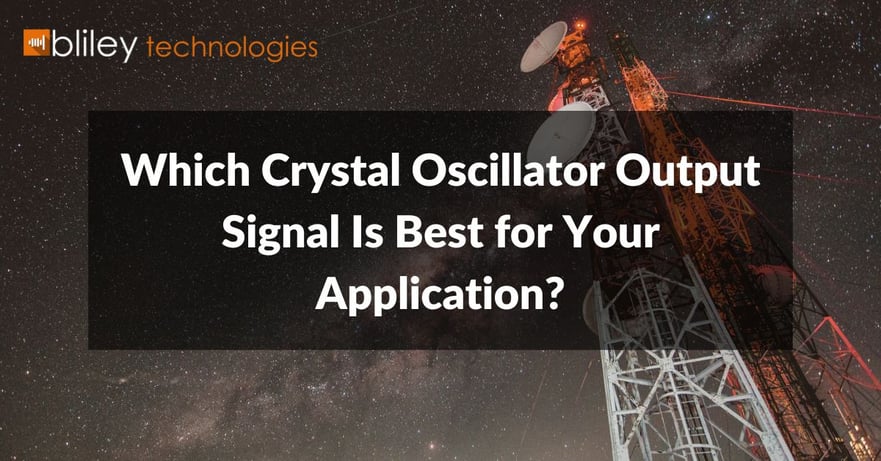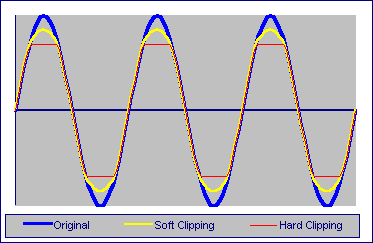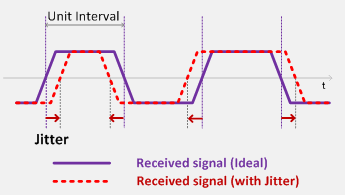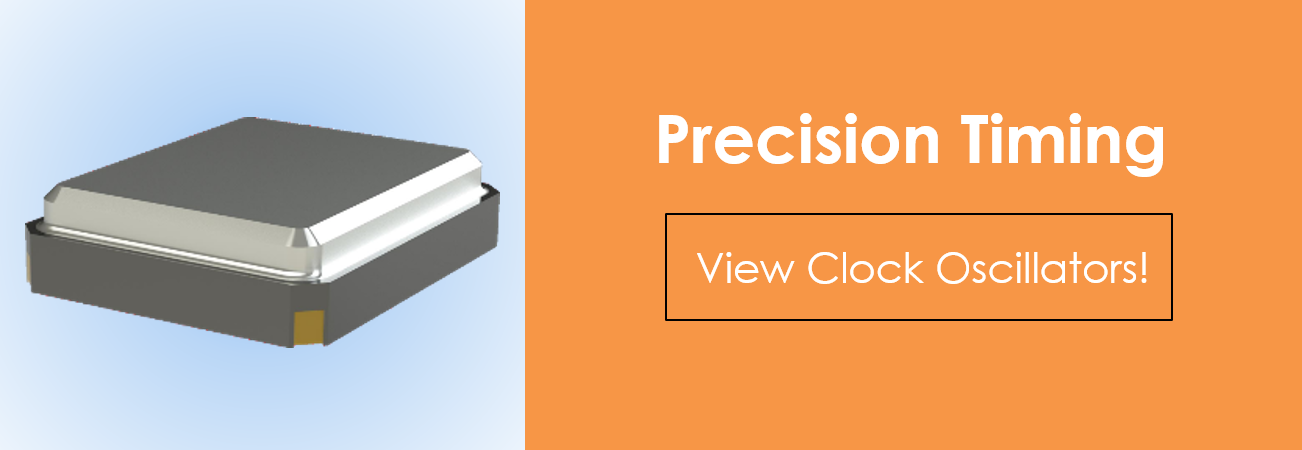
Why is it important to choose the right crystal oscillator output signal?
The output signal types of crystal oscillators can provide different benefits and drawbacks depending on what you're trying to accomplish with your product. With that said, it's important to understand signal types to avoid as much attenuating and distorting of your clock signal as possible. You'll also want to be sure you're receiving more benefits than drawbacks from the signal to meet your specific design needs.
The Two Categories of Crystal Oscillator Output Signals
The common signal types are broken down into two categories: single-ended and differential logic outputs. Each category includes several types of output signals.
Single-Ended
- Sinewave and clipped sinewave
- CMOS (complementary metal oxide semiconductor)
- HCMOS (high speed CMOS)
- LVCMOS (low voltage CMOS)
- TTL (transistor-to-transistor logic)
Differential Logic
- ECL (emitter coupled logic)
- PECL (positive emitter coupled logic)
- LVPECL (low voltage PECL)
- CML (current-mode logic)
- LVDS (low voltage differential signaling)
- HCSL (high speed current steering logic)
An Overview of Oscillator Output Signals
Which signal type you choose depends on the specific needs of your application. Let's take a closer look at each signal type to better understand their benefits and uses. This will give you a clearer idea of which type is best for your needs.

Single-Ended: Sinewave & Clipped Sinewave
This is the standard or "natural" signal output of a crystal oscillator circuit. It consists of just one fundamental frequency, without any harmonics present. This will provide the maximum spectral fluctuation that you can expect from your oscillator. A sinewave output is great for demanding, low phase noise applications.
Single-Ended: Complementary Metal Oxide Semiconductor (CMOS), HCMOS, & LVCMOS
Complementary metal oxide semiconductor (CMOS) outputs are suitable for shorter trace lengths and lower frequency clock sources (below 200MHz). This will allow for a direct connection between the clock output and receiver input. In most cases, a low value series resistor can be used to effectively reduce reflections and maintain a reliable signal. There are also high speed (HCMOS) and low voltage (LVCMOS) outputs that may fit better with your specific needs.
Related: CMOS vs. LVCMOS: Which Is the Best Output Signal for Your Application?
Single-Ended: Transistor-to-Transistor Logic (TTL)
For the most part, TTL has been outdated by CMOS. This is because CMOS provides lower costs and better noise immunity than TTL. Both CMOS and TTL are great for low power consumption, higher output swing, and relatively low cost needs.
Differential: Emitter Coupled Logic (ECL)
ECL was mainly introduced as a good alternative to TTL. ECL circuits can change state very rapidly which makes them more capable of very high speed data transmission needs. ECL does have some disadvantages, however. It needs fairly high currents to operate and uses a negative power supply, which can create challenges when trying to connect to positive base power supply devices.

Differential: Positive Emitter Coupled Logic (PECL) & LVPECL
Positive emitter coupled logic (PECL) outputs are frequently used in high-speed clock distribution circuits. This is because PECL provides high noise immunity, the ability to drive high data rates over long line lengths, and good jitter performance due to large voltage swings. PECL's main disadvantage is that it requires high power consumption to operate.
Low voltage PECL (LVPECL) provides a good foundation for Gigabit Ethernet (GbE) and Fibre Channel usage. LVPECL is similar electrically to low voltage differential signaling (LVDS), but provides a larger differential voltage swing and slightly less power efficiency (read more about LVDS below). Some challenges may arise with the output from LVPECL because termination is needed to emit a voltage. Also be aware that differential receivers from different manufacturers can have different input tolerances. So make sure to do your homework on which receiver will work best for you!
Differential: Current-Mode Logic (CML)
CML has a similar performance to that of a LVPECL. The main difference is that CML does not require an external bias. This makes CML a good alternative to LVPECL when low power is a concern.
Differential: Low Voltage Differential Signaling (LVDS)
LVDS is similar to LVPECL, but the power consumption for LVDS is lower and tends to have smaller voltage swings. This output is typically used for high speed data transfer needs, like clock distribution or backplane transceivers. For higher data rates, high speed current steering logic (HCSL), CML, or LVPECL are usually required instead, but will need more power consumption than LVDS.
LVDS also has reduced susceptibility to noise and is easy to implement in CMOS integrated circuits (ICs). One disadvantage to LVDS is its reduced jitter performance compared to PECL, but new technology is being looked at to achieve the same level of jitter performance as LVPECL.
High Speed Current Steering Logic (HCSL)
HCSL is a newer output standard that is similar to LVPECL. One advantage of HCSL is its high impedance output with quick switching times. A 10 to 30 ohm series resistor is recommended to reduce possible overshoot and ringing. Other advantages include the quickest switching speeds, average power consumption (between that of LVDS and LVPECL), and average-to-good phase noise performance.
Which Oscillator Output Signal Type Is Right for Your Needs?
Differential vs. Single Ended
- Sinewave generally offers the best phase noise, followed by CMOS, then differential.
- Higher frequencies tend to require differential signals.
- Differential signals have better rise and fall time.
- Differential signals are more resistant to common mode noise.
- Differential signals have fewer EMI concerns.
Ease of Use
- LVDS requires only a single resistor at the receiver, while LVPECL requires termination at both transmitter and receiver ends.
Fastest Speed
- LVDS is faster than CMOS. HCSL and LVPECL are faster but can require more power.
Lowest Power Consumption
- LVPECL is faster but consumes more power, so we recommend using CMOS or LVDS for low power consumption.
Best Jitter Performance
- You can get the best jitter performance from LVPECL, followed by LVDS, and then CMOS.
Final Thoughts on Crystal Oscillator Output Signals
We hope you now have a very basic understanding of the different output signal types and an idea of what will work best for different applications. It's important to note that since this is such a basic overview, you'll need to do more research on the signal types you're interested in before making a final decision.
Have specific questions about oscillator output signals? Reach out to our engineers to discuss your project's needs.






